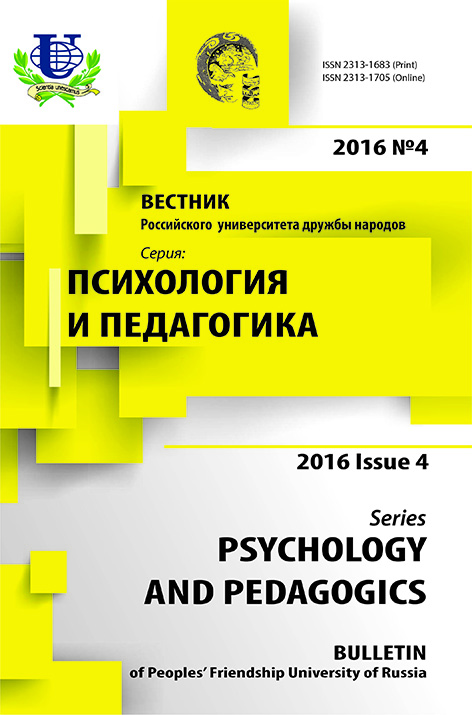No 4 (2016)
- Year: 2016
- Articles: 9
- URL: https://journals.rudn.ru/psychology-pedagogics/issue/view/913
- DOI: https://doi.org/10.22363/2313-1683-2016-4
Full Issue
Articles
CREATIVITY AND CONVERGENT THINKING: REFLECTIONS, CONNECTIONS AND PRACTICAL CONSIDERATIONS
Abstract
Creativity is conceived as the ability to generate new, original ideas that are meaningful and valuable in their context. Models have often debated the role of divergent and convergent thinking within creativity. This paper focuses on convergent thinking and examines ways that it has been conceptualized and operationalized. It is noted that some of these conceptualizations fit more than others with creative thinking. Finally, examples of new ways to measure convergent thinking for creativity are presented and explained. The Evaluation of Potential Creativity (EpoC) battery is described as a relevant new tool to assess convergent thinking, with a focus on the integrative, original synthesis, which is ultilmately essential to the creative process, and the potential for resulting creative productions. Implications for measuring creativity and education are discussed.
 7-15
7-15


INTRODUCING BILINGUAL CREATIVE EDUCATION TO RUSSIAN SCHOOL CURRICULUM
Abstract
 16-28
16-28


CAPACITY, POTENTIAL, AND ABILITY: INTEGRATING DIFFERENT APPROACHES TO STUDYING ANIMAL VS HUMAN CREATIVE PROCESSES
Abstract
 29-36
29-36


SELF-REGULATORY ABILITIES IN PROFESSIONAL ACTIVITY
Abstract
 37-46
37-46


FEATURES OF RESPONSIBILITY IN HIGH SCHOOL STUDENTS FROM LARGE AND ONE-CHILD FAMILIES
Abstract
 47-54
47-54


EMOTIONAL INTELLIGENCE AND PARENTING STYLES INFLUENCE ON ADOLESCENT GIRLS
Abstract
 55-66
55-66


AUTO- AND HETEROSTEREOTYPES AS INDICATORS OF EXPRESSIVENESS DEGREE IN PRIMARY SCHOOL AGE CHILDREN’S ETHNIC IDENTITY EMOTIONAL COMPONENT
Abstract
 67-79
67-79


PSYCHOLOGICAL WELL-BEING IN THE CONTEXT OF STUDENTS SOCIAL REPRESENTATIONS ABOUT HIGH SOCIAL STATUS
Abstract
 80-87
80-87


CONTEXT AND EMPIRICAL APPROACH TO FORMATION OF MATHEMATICAL COMPETENCE IN STUDENTS OF HUMANITARIAN TRAINING DIRECTIONS AT UNIVERSITY
Abstract
 88-97
88-97
















